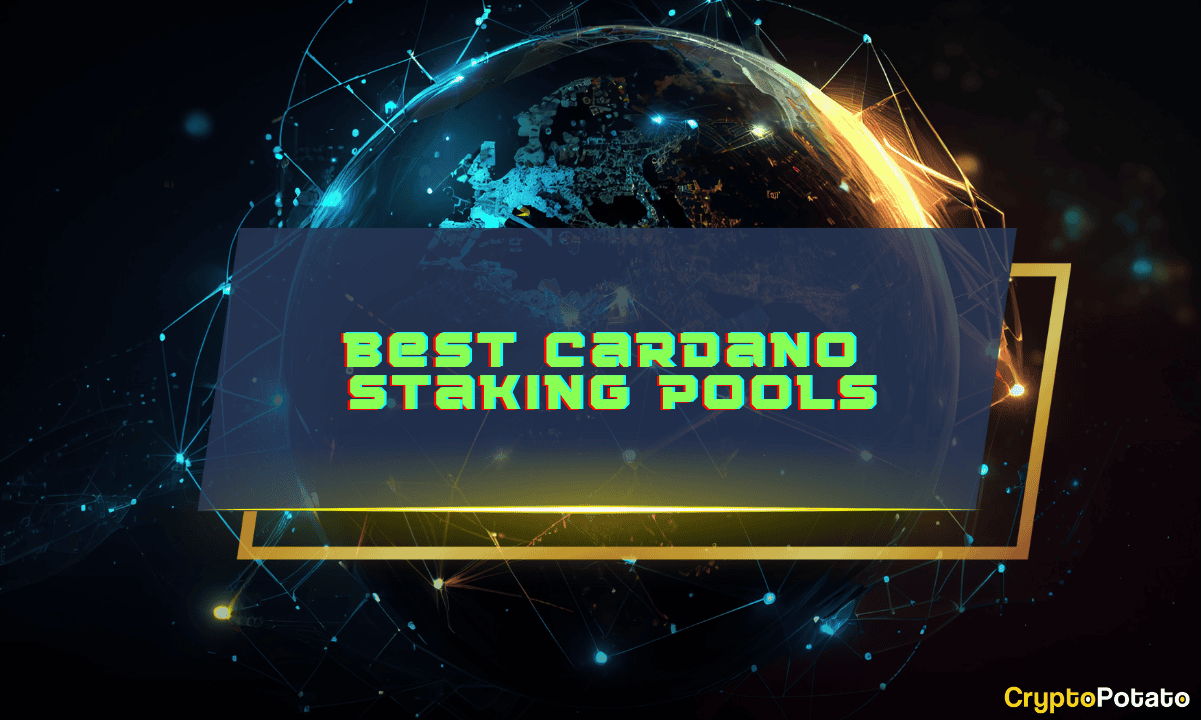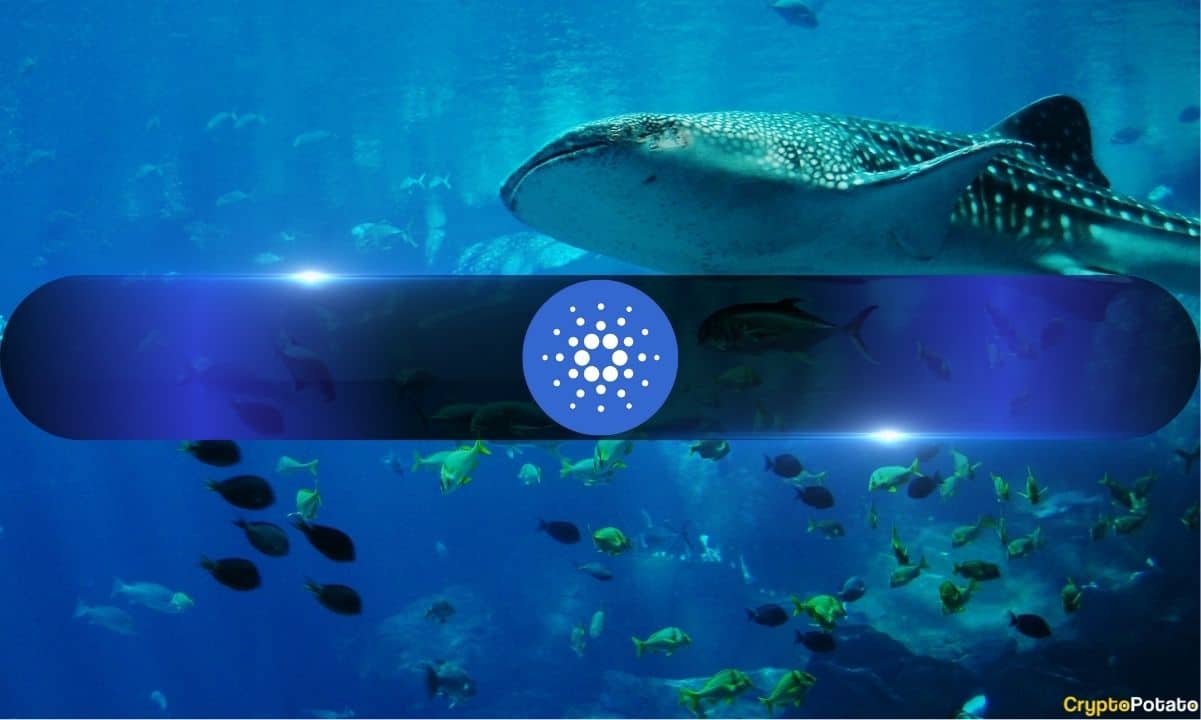Best 5 Cardano Staking Pools: How to Stake ADA in 2024
Cardano (ADA) is one of the largest blockchains with a vast dApp ecosystem and one of crypto’s most active development communities. Data shows that at the time of this writing in July 2024, over 70% of ADA in...

Cardano (ADA) is one of the largest blockchains with a vast dApp ecosystem and one of crypto’s most active development communities.
Data shows that at the time of this writing in July 2024, over 70% of ADA in circulation is actively staked. That means millions of Cardano users hold and stake ADA, enhancing the network’s security and compounding profits.
Staking ADA does not require lockup periods, and users can transact ADA even while it remains staked. This level of flexibility makes Cardano’s staking mechanism unique, attracting crypto veterans and newcomers alike.
With Cardano’s rising popularity, newcomers seek to stake their tokens in some of the best Cardano staking pools.
Quick Navigation
- What is Cardano Staking?
- Staking ADA in a Pool Vs. Staking ADA on an Exchange
- How to Stake your Cardano (ADA)
- The Best Cardano Staking Pools
- Factors to Consider When Choosing a Staking Pool
- Researching and Evaluating Staking Pools
- Is Staking ADA Safe?
- Final Thoughts on the Best Pools to Stake Cardano
What is Cardano Staking?
As in any proof-of-stake blockchain, staking pools are crucial to the Cardano network. They serve as block-producing server nodes that pool the staked ADA of multiple depositors.
Holding ADA on the Cardano blockchain represents a commitment to the network, with the stake size proportional to the amount of staked ADA.
One peculiarity of Cardano is stake addresses, which allow you to stake all tokens within a specific address. That means you don’t have to re-stake any of your funds (but you can’t send or receive payments as you would with your everyday wallet).
Earning Rewards With ADA
ADA holders can earn rewards in two ways: by delegating their stake to a pool managed by someone else or by running their own pool. The Ouroboros protocol primarily uses the amount of stake delegated to a pool to decide who should add the following block to the blockchain and receive a reward.
The more assets delegated to a pool (there are limits), the higher the chances of creating the next block. Naturally, the rewards earned are shared among everyone who participated (including operators) and delegated their funds.
Public Stake Pools Vs. Private Stake Pools
Note that there are public and private Cardano stake pools.
- Public pools provide an address that enables users to delegate their tokens and receive rewards directly, taking away the complexity of running the pool themselves.
- Private pools only provide rewards to their operators and vetted delegators. If you have the time and resources to run the node, you could keep 100% of the stake earnings to your reward address.
- More specifically, having sufficient resources means you can run at least one block every epoch (the amount of ADA per block changes based on multiple parameters, and it’s never the same for every pool.)
To sum up, stake pools are managed by reliable operators who have the technical knowledge and resources to run the node consistently. The more delegated stake in a pool, the higher its chances of being chosen as the next block producer.
Staking ADA in a Pool Vs. Staking ADA on an Exchange
Staking in a Cardano pool supports network decentralization, as it relies on independent operators running nodes. Rewards are distributed proportionally based on the amount of ADA staked and the pool’s performance.
As with other blockchains, delegators maintain control over their ADA, as staking in Cardano is non-custodial; funds are not locked and can be accessed at any time.
More advanced crypto users might prefer staking directly on a Cardano pool, but this requires more due diligence, such as finding reliable pools with minimal orphaned blocks and a robust technical setup. Other technical elements will be discussed at the end of this article.
-
Staking on an Exchange
On the other hand, exchanges often provide a more user-friendly interface and manage the technical aspects of staking. However, note that the main risk of doing this is that exchanges are custodial platforms, meaning they hold your funds.
Further, exchanges may charge higher fees, and the reward structure can vary, sometimes offering lower returns than independent pools.
Overall, it depends on your situation. Newcomers might find an exchange a more suitable option because they provide a more user-friendly experience but face higher fees and custodial risk.
Before we review the best Cardano staking pools, there are a few things to clear out of the way. First, you must know how to stake your Cardano into a pool.
Setting up a Cardano wallet
First things first —you need a Cardano wallet that supports staking. There are several options to choose from: Yoroi, Daedalus, or Exodus. While these are software options, you can still stake with hardware wallets, although you might be obliged to use a third-party app to stake Cardano.
The best way to do this is to read our comprehensive guide on the Best Cardano Wallets for 2024.
Once you have chosen a wallet for the job and top it up, you’re ready to dive into some of the best Cardano staking pools.
Choosing a Cardano Pool
There are around 3,000 Cardano pools to choose from. Ideally, you’d go to ADApools.org, a platform that aggregates data from all Cardano pools in existence and a dashboard with all the metrics necessary to gauge each pool’s performance.
Each pool in the list has several metrics embedded, including the stake APY, stake size, blocks (i.e., number of blocks produced —the higher, the better—), and pledge (amount of ADA pledged). Here’s a look at the website:
By clicking on one of the pools, you’ll find important metrics and their overall performance. Further, you can look at the number of rewards, current delegators, and you might also find the owner/operators, who usually have a biography or social media in which you can contact them.
This is another key point: joining social media forums and discussing topics in Cardano groups can help you stay up-to-date on the latest developments.
If you click on the More Information tab, you will be redirected to cexplorer.io, and there, you’ll find more in-depth information about the pool, including the pool’s lifetime luck, number of delegators, and saturation percentage. In the example below, the Cardanians pool has an 89.36% saturation, 47 blocks in epoch, and a Lifetime Luck of 97.7%.
Pool Hopping
Since returns from stake pools fluctuate with each epoch, a pool currently offering low returns may later yield higher rewards. In staking, there’s a strategy called Pool Hopping. As the name suggests, you are moving from one pool to another to capitalize on the varying returns of different staking pools.
In other words, pool hoping is just betting on the pool’s luck. There’s even a metric called Lifetime Luck, which is applied to each Cardano pool. Be aware that pool hopping also means paying transaction fees with each move, and over time, these can diminish the overall benefits, making the strategy less advantageous.
If you don’t have the time for it, you might as well take the good ol’ passive staking approach —enjoying the convenience of crypto staking without constant, frenetic monitoring.
The Best Cardano Staking Pools
Now that most of the important information and basic steps to staking in Cardano have been explained, let’s look at some of the top Cardano pools.
However, a necessary disclosure here is that the pools saturate fast. Therefore, the list below does not have a specific order, as pools can quickly become outdated.
The best way to do your research is to use the above factors and practices once a new batch of staking pools gains traction in Cardano. This will allow you to delegate your ADA to new, hotter pools.
Please note that some of the stats that we’ve shown below change constantly. The following stats are relevant to July 2024.
Cardanians.io
Cardanians is a collective of cryptocurrency enthusiasts and official ambassadors for Cardano, committed to enhancing the network’s security and decentralization.
They manage staking pools known for their stability, transparency, and reliability. Additionally, Cardanians participate in community activities by writing and translating articles to support the Cardano ecosystem.
Quick stats:
- Margin fee: 2%
- Lifetime ROA: 4%
- Blocks produced: 16,135 total.
- Amount staked (in ADA): 66M
CardanoCafe
CardanoCafe is a staking pool operator within the Cardano ecosystem, recognized for its dedication to sustainability and climate neutrality.
CardanoCafe is part of the Climate Neutral Cardano (CNC) alliance and uses 100% renewable energy for its operations, highlighting its commitment to environmentally friendly practices.
The platform offers at least three staking pools for delegators: Cafe1, Cafe2, and Cafe3. The two main pools have a saturation of 95.14% and 14.05%, with the third one having less than 1%. Naturally, the most saturated pool has a bigger fee but comes with more delegators and more active staked ADA.
Quick stats:
- Margin fee: 1%
- Lifetime ROA: 3.93%
- Blocks produced: 11,740
- Amount staked (in ADA): 72M
Spire Staking
Spire Staking is a prominent staking pool in the Cardano ecosystem, identified by the ticker [SPIRE]. According to the Cardano Journal, it is listed among the top staking pools due to its competitive ROA and substantial live stake.
Overall, Spire Staking is a well-established and high-performing Cardano staking pool with a high number of delegators and over 14,000 blocks produced.
The pool’s performance metrics and block production highlight its efficiency and effectiveness as a staking option.
Quick stats:
- Margin fee: 1%
- Lifetime ROA: 3.96%
- Blocks produced: 14,843
- Amount staked (in ADA): 70.39M
Rocky Mountain Staking
Rocky Mountain Staking (ROCKY) is a Cardano stake pool run by Ken Akerley, an experienced IT professional based in Calgary, Canada. Ken operates the pool using its own infrastructure and avoiding centralized cloud providers.
The pool has become one of the largest (and most saturated) pools, with over 58M staked ADA. This is primarily thanks to the fact that a public and experienced operator manages it and has secure and highly available infrastructure to ensure no missed blocks.
However, the fee is higher than other pools, at 1.99%. This is compensated by the pool’s Lifetime and recent ROA, which are 3.3% and 4.02%, respectively.
Ken is dedicated to Cardano’s decentralization and its community, being constantly active in forums and discussions on social media regarding its pool and the overall Cardano ecosystem.
Quick stats:
- Margin fee: 1.99%
- Lifetime ROA: 4.02%
- Blocks produced: 7339
- Amount staked (in ADA): 58M
Nordic Pool
Nordic Pool is one of the largest Cardano staking pools. It is run by two pseudonymous crypto entrepreneurs based in Sweden. The team also consists of two community moderators who are in charge of running the site’s official Telegram channel and social media.
Nordic Pool offers up to five pools, all with the same ticker (NORTH). The platform has partnered with SundaeSwap and other prominent crypto applications in the industry.
Quick stats:
- Margin fee: 1.99%
- Lifetime ROA: 4.02%
- Current ROA: 3.3%
- Blocks produced: 7339
- Amount staked (in ADA): 58M
Factors to Consider When Choosing a Staking Pool
- Return on Stake (ROS): represents the expected annual return from staking in a particular pool. Comparing ROS across different pools can help maximize potential earnings.
- Pool Saturation: Pools have a saturation point beyond which additional staking results in diminishing returns. Choosing pools that are not overly saturated ensures optimal rewards.
- Pool Fees: Pools might charge a fixed fee (e.g., 340 ADA) and a variable margin fee. Lower fees generally translate to higher net rewards for delegators.
- Pool Reputation and History: Evaluating a pool’s track record, including its reliability and performance history, provides insights into its stability and trustworthiness.
- Pool Infrastructure and Reliability: Reliable infrastructure ensures the pool can consistently produce blocks and earn rewards. Look for pools with minimal orphaned blocks and robust technical setups.
- Pool Operator Communication and Community Engagement: Active communication and engagement from pool operators can indicate a well-managed pool. Operators who contribute to the community and
Researching and Evaluating Staking Pools
Here are a few research and evaluation practices to follow before staking on Cardano.
Using Cardano Community Resources
Leverage resources like the Cardano Foundation’s website and community forums to gather information about different pools.
Exploring Pool Metrics on Cardano Blockchain Explorers:
Some of the best data aggregators for pools are ADApools and Cardano Journal, which provide detailed metrics on pool performance, saturation, fees, lifetime luck, blocks produced, and each pool’s official website, helping you make informed decisions.
Seeking Advice from Experienced Stakers
Engaging with experienced stakers in community forums and social media groups can provide valuable insights and recommendations. Moreover, most Cardano staking pools are led by operators that provide a public Telegram channel that allows you to stay updated with current pool developments.
Joining Cardano Community Forums and Social Media Groups
Participating in groups like r/cardano will help you stay updated on the latest developments and pool performance and seek community advice.
Moreover, engaging with the Cardano community through forums and other social media groups, etc., is crucial to gain insights and advice from ADA stakers.
Is Staking ADA Safe?
In general terms, staking is quite an attractive way of generating a passive, compounded income. You’re letting your crypto funds work for you while committing to the network’s overall security.
However, staking in ADA —and with any crypto network, for that matter— conveys certain risks that should be considered before joining a pool. Since there are no lockup periods for staking ADA, that point will be skipped, but there are other general risks associated with staking.
Potential risks associated with staking
- Volatility: The value of the staked token can fluctuate significantly, even overnight. High annual percentage yields (APYs) may be offset by sharp asset price declines.
- Liquidity Risk: Low liquidity in some cryptocurrencies can make it difficult to sell or convert staking rewards into stablecoins, posing challenges, especially for micro-cap altcoins.
- Running a node: Running your own pool requires a certain level of technical expertise and constant uptime. This translates into time and resources to run a Cardano pool.
- Smart contract vulnerabilities: Staking platforms and cryptocurrencies are susceptible to hacking and smart contract exploits.
The Importance of Diversification
As the old saying goes, don’t put all your eggs in one basket. Users often explore multiple pools and invest in several of them in order to offset the risks and potential losses associated with staking.
Investing in multiple pools can compensate for the impact of a single asset’s poor performance. In practice, this should balance the risk and potential returns.
Staying Informed and Adapting to Ecosystem Changes
Like one of the previous points, staying updated with the latest developments within the Cardano ecosystem will help you make wiser and more informed decisions. Educating yourself on topics you’re unaware of is also helpful.
Final Thoughts on the Best Pools to Stake Cardano
Choosing the best Cardano staking pool requires due diligence and keeping up with the latest developments in the Cardano ecosystem.
Note that some of the best Cardano pools saturate fast. Therefore, it is recommended that you follow the instructions in this guide before joining a staking pool.
Binance Free $600 (CryptoPotato Exclusive): Use this link to register a new account and receive $600 exclusive welcome offer on Binance (full details).
LIMITED OFFER 2024 at BYDFi Exchange: Up to $2,888 welcome reward, use this link to register and open a 100 USDT-M position for free!
Delegate Your Voting Power to FEED DRep in Cardano Governance.
DRep ID: drep12ukt4ctzmtf6l5rj76cddgf3dvuy0lfz7uky08jfvgr9ugaapz4 | We are driven to register as a DRep by our deep dedication to the Cardano ecosystem and our aspiration to take an active role in its development, ensuring that its progress stays true to the principles of decentralization, security, and community empowerment.DELEGATE VOTING POWER!








